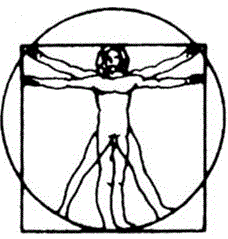Heart Rate Variability Training
Heart rate variability is the physiological phenomenon of variation in the time interval between heartbeats. It is measured by the variation in the beat-to-beat interval.

HRV Training
Heart Rate Variability biofeedback training (HRV) is a process by which you learn to regulate your breathing to maximize your heart function. This allows proper blood flow and oxygen to flow throughout your body, and most importantly, your brain sending a feeling a safety. HRV helps regulate the Autonomic Nervous System reducing fight, fight, freeze or fawning behaviors. Increasing a calm connected internal state.
There are several benefits to HRV training including:
-
Reduce stress
-
Reduce high blood pressure
-
Reduce cortisol levels
-
Improve recovery (better sleep, faster muscle and mental recovery)
-
Improve cognitive and memory performance
-
Improve mood
-
Increase energy level
-
HRV studies has shown HRV to self regulate symptoms of
Attention Deficit Disorder
Traumatic Brain Injury
Migraine/ Headache
Post Concussion Syndrome
Concussion
Peak Sports, Music Other Performance
Stroke
Insomnia
Anger
Chronic Fatigue
Eating Disorders
Anxiety
Depression
Fibromyalgia
Drug and Alcohol addiction
Heart Failure
Environmental Sensitivity
Hypertension
Autoimmune Disorders
Lupus
Multiple Sclerosis
Chrons
Arthritis
Diabetes
Chronic Pain
The smoothness or jaggedness, essentially the quality of the heart rhythms, is reflected
in the coherence levels and ratios, which the emWave technology is able to measure and
display.
A number of important physiological changes occur during coherence. The two
branches of the ANS synchronize with each other, and there is an overall shift in
autonomic balance toward increased parasympathetic activity. There also is increased
physiological entrainment, which occurs when a number of different bodily systems
synchronize to the rhythm generated by the heart (see figure below). Finally, there is
increased synchronization in heart and brain activity.
Physiological entrainment during coherence: The top graphs show an individual’s respiration
rhythm, heart-rate variability and blood-pressure rhythm, or pulse transit time over a six minute
period. At the 300-second mark, the center dashed line, the individual used HeartMath’s Quick
Coherence® Technique to activate a feeling of appreciation and shift into the coherence state. At
this point, the rhythms of all three systems became entrained: Notice that the rhythmic patterns
are smooth, harmonious and synchronized with one another, rather than jagged and out of sync.
By practicing self-regulation techniques, people change their coherence levels. Each individual session automatically is recorded and stored so users can track their progress over time. Your clinician may start by using an application called the Coherence Coach®, which teaches a self-regulation tool that uses a breathing pacer. After the HRV method is understood your clinician may add colorful interactive games that add layers of fun and novelty to the overall experience.

